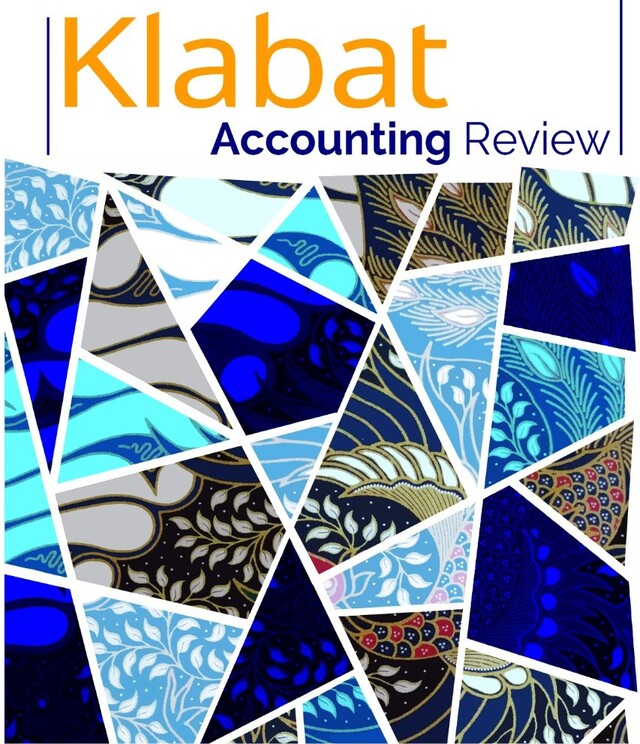The interlink between capital structure, sales growth, and sustainable growth rate: Comparative insights from IDX Growth and IDX Sharia Growth
DOI:
https://doi.org/10.60090/kar.v6i2.1337.81-93Keywords:
Capital Structure, Sales Growth, Sustainable Growth Rate, IDX Growth, IDX Sharia GrowthAbstract
The dynamics of capital structure (CS), sales growth (SG), and sustainable growth rate (SGR) play pivotal roles in corporate finance, impacting a company’s valuation and strategic direction. This study investigates the factors influencing the SGR of companies listed in the IDX Growth 30 and IDX Sharia Growth indices, focusing on the roles of CS and SG. Using a quantitative approach, secondary data from the financial reports of these companies from 2022 to 2023 were analyzed through regression and comparative statistical methods. The findings reveal distinct influences on SGR for each index: within the IDX Growth 30, SG significantly impacts SGR positively, emphasizing the importance of revenue expansion and internal funding, while CS does not show a significant effect. In contrast, for IDX Sharia Growth firms, CS significantly influences SGR, highlighting the effective use of ethical financing sources, whereas SG does not. Despite these differences, there are no significant gaps in SGR between sharia-compliant and non-sharia firms, indicating that both achieve comparable sustainable growth through their respective strategies. Only CSs are different between these two types of firms. These results suggest that tailored growth strategies are essential, with conventional firms focusing on sales and market expansion and sharia-compliant firms leveraging ethical financing and operational efficiencies. Future research should consider additional variables like ownership structure and macroeconomic factors to further understand their impact on SGR across different firm categories.
References
Ahmeti, Y., Kalimashi, A., Ahmeti, A., & Ahmeti, S. (2024). Factors Affecting Sustainable Growth Rate and Its Impact on Financial Performance of Kosovo Manufacturing Companies. Economic Stud-ies (Ikonomicheski Izsledvania), 33(4), 61–74.
Akguc, S., & Al Rahahleh, N. (2021). Shariah compliance and investment behavior: Evidence from GCC countries. Emerging Markets Finance and Trade, 57(13), 3766–3791. https://doi.org/10.1080/1540496X.2019.1706164
Akhtar, M., Yusheng, K., Haris, M., Ain, Q. U., & Javaid, H. M. (2022). Impact of financial leverage on sustainable growth, market performance, and profitability. Economic Change and Restructuring, 55(2), 737–774. https://doi.org/10.1007/s10644-021-09321-z
Alnori, F., & Alqahtani, F. (2019). Capital structure and speed of adjustment in non-financial firms: Does sharia compliance matter? Evidence from Saudi Arabia. Emerging Markets Review, 39, 50–67. https://doi.org/10.1016/j.ememar.2019.03.008
Badokina, E. A., Ilyina, L. I., Shvetsova, I. N., Nekrasova, G. A., & Mokieva, A. S. (2021). Corporate sustainable growth models: the impact of capital structure. IOP Conference Series. Earth and Envi-ronmental Science, 650(1), 012074. https://doi.org/10.1088/1755-1315/650/1/012074
Baños-Caballero, S., García-Teruel, P. J., & Martínez-Solano, P. (2014). Working capital manage-ment, corporate performance, and financial constraints. Journal of Business Research, 67(3), 332–338. https://doi.org/10.1016/j.jbusres.2013.01.016
Carpenter, R. E., & Petersen, B. C. (2002). Capital market imperfections, high‐tech investment, and new equity financing. Economic Journal (London, England), 112(477), F54–F72. https://doi.org/10.1111/1468-0297.00683
Edwards, M. G. (2021). The growth paradox, sustainable development, and business strategy. Busi-ness Strategy and the Environment, 30(7), 3079–3094. https://doi.org/10.1002/bse.2790
Gartner, W. B., Frid, C. J., & Alexander, J. C. (2012). Financing the emerging firm. Small Business Economics, 39(3), 745–761. https://doi.org/10.1007/s11187-011-9359-y
Guenzi, P., Sajtos, L., & Troilo, G. (2016). The dual mechanism of sales capabilities in influencing organizational performance. Journal of Business Research, 69(9), 3707–3713. https://doi.org/10.1016/j.jbusres.2016.03.033
Gunawan, W. B. (2023). The link of current ratio, benchmark coal price, return on assets, and debt to equity ratio to cash holding: The case of Adaro energy tbk in 2018 – 2022. Klabat Accounting Review, 4(2), 79. https://doi.org/10.60090/kar.v4i2.991.79-87
Indonesia Stock Exchange. (2024). Indeks Saham. https://www.idx.co.id/id/produk/indeks
Isnurhadi, Sulastri, Saftiana, Y., & Jie, F. (2022). Banking industry sustainable growth rate under risk: Empirical study of the banking industry in ASEAN countries. Sustainability, 15(1), 564. https://doi.org/10.3390/su15010564
Kartikasari, D. (2023). Financial performance: Sustainability, size, Shariah, and sector effects in Mus-lim-minority stock exchanges. Journal of Islamic Monetary Economics and Finance, 9(4). https://doi.org/10.21098/jimf.v9i4.1765
Kong, Y., Donkor, M., Musah, M., Nkyi, J. A., & Ampong, G. O. A. (2023). Capital structure and cor-porates financial sustainability: Evidence from listed non-financial entities in Ghana. Sustainability, 15(5), 4211. https://doi.org/10.3390/su15054211
Makkonen, H., Pohjola, M., Olkkonen, R., & Koponen, A. (2014). Dynamic capabilities and firm per-formance in a financial crisis. Journal of Business Research, 67(1), 2707–2719. https://doi.org/10.1016/j.jbusres.2013.03.020
Margaritis, D., & Psillaki, M. (2007). Capital structure and firm efficiency. Journal of Business Fi-nance & Accounting, 34(9–10), 1447–1469. https://doi.org/10.1111/j.1468-5957.2007.02056.x
Mubarak, M. A., & Haryono, S. (2023). The Influence of Firm Characteristics and Capital Structure on Sustainable Growth Rate: Moderating Effect of Industry Sector. Petra International Journal of Business Studies, 6(1), 62–69.
Nugroho, V. C. (2020). Sustainable Growth Rate model in Indonesia manufacturing firms. The Win-ners, 21(2). https://doi.org/10.21512/tw.v21i2.6614
Orlova, S., Harper, J. T., & Sun, L. (2020). Determinants of capital structure complexity. Journal of Economics and Business, 110(105905), 105905. https://doi.org/10.1016/j.jeconbus.2020.105905
Pham, H. N., Kalyebara, B., & Islam, S. M. N. (2020). Ownership Structure, Capital Structure and Firm Growth: Empirical Evidence and Sustainable Growth Implications. International Journal of Business and Economics, 19(3), 221–235.
Rahim, N. (2017). Sustainable growth rate and firm performance: A case study in Malaysia. Interna-tional Journal of Management Innovation & Entrepreneurial Research, 3(2), 48–60. https://doi.org/10.18510/ijmier.2017.321
Ramli, N. A., Rahim, N., Mat Nor, F., & Marzuki, A. (2022). The mediating effects of sustainable growth rate: evidence from the perspective of Shariah-compliant companies. Cogent Business & Management, 9(1). https://doi.org/10.1080/23311975.2022.2078131
Romano, C. A., Tanewski, G. A., & Smyrnios, K. X. (2001). Capital structure decision making. Jour-nal of Business Venturing, 16(3), 285–310. https://doi.org/10.1016/s0883-9026(99)00053-1
Sakti, M. R. P., Tareq, M. A., Saiti, B., & Akhtar, T. (2017). Capital structure of Islamic banks: a crit-ical review of theoretical and empirical research. Qualitative Research in Financial Markets, 9(3), 292–308. https://doi.org/10.1108/qrfm-01-2017-0007
Vuković, B., Tica, T., & Jakšić, D. (2022). Sustainable growth rate analysis in Eastern European companies. Sustainability, 14(17), 10731. https://doi.org/10.3390/su141710731





